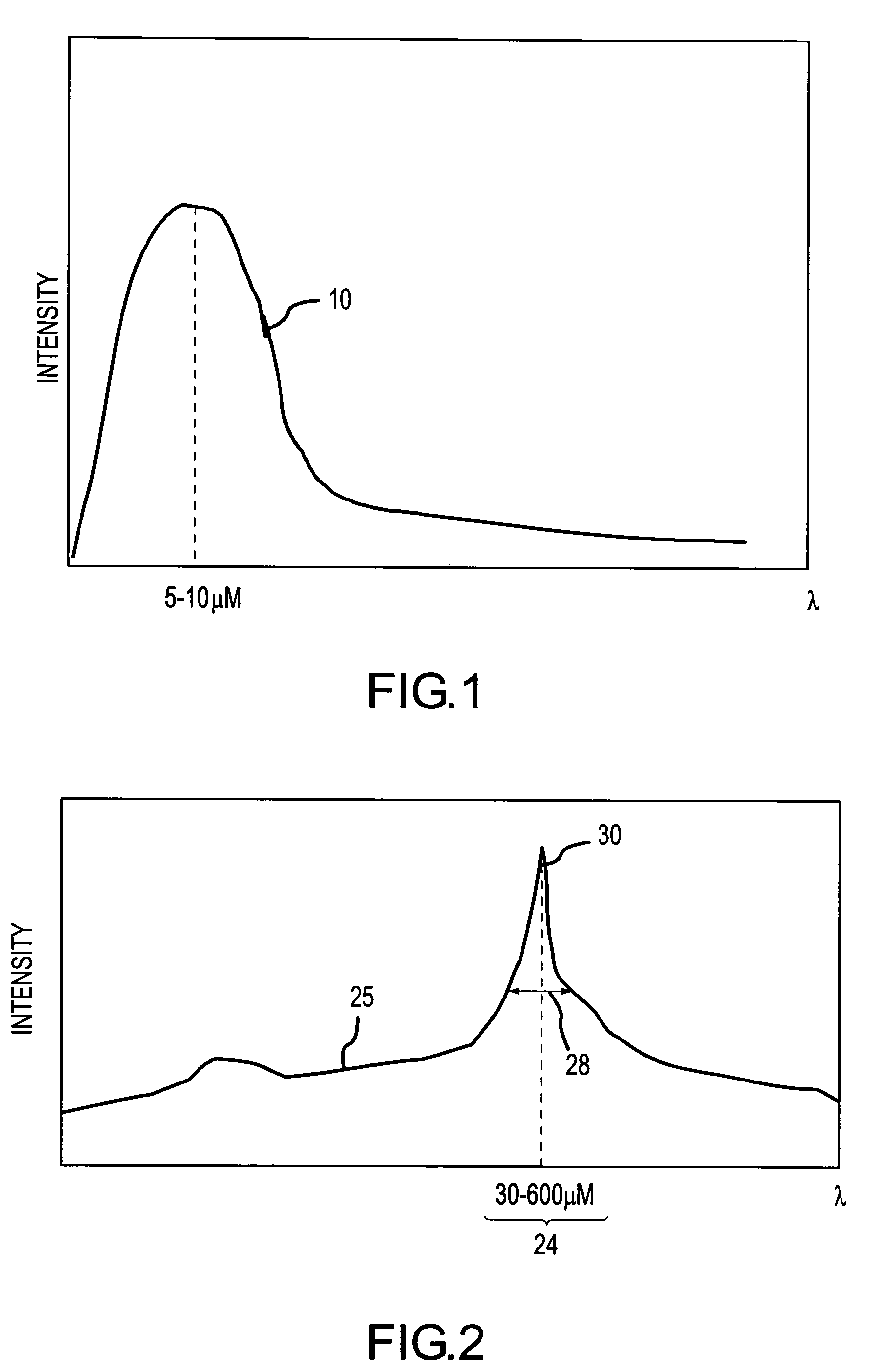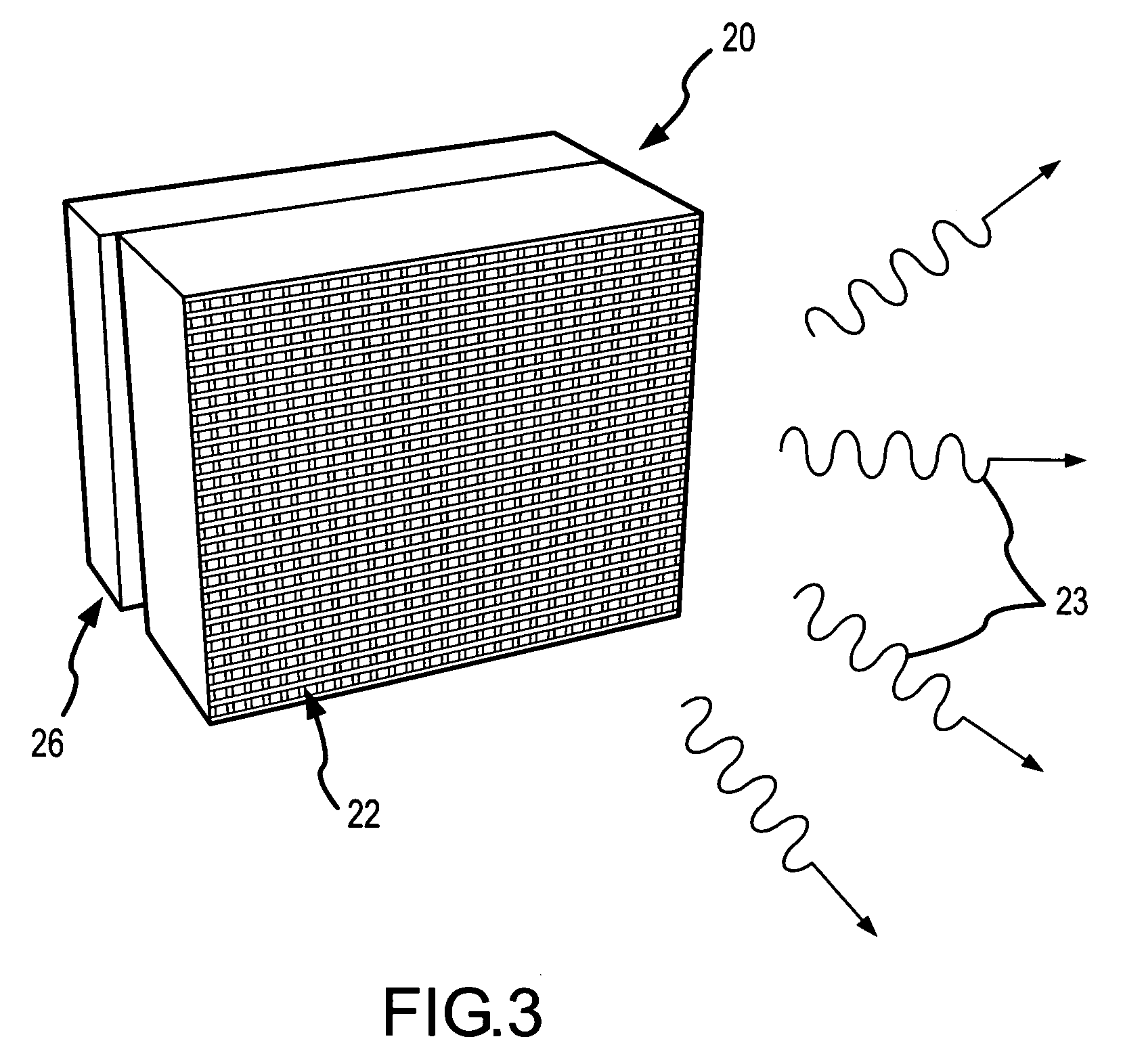Thermally powered terahertz radiation source using photonic crystals
a radiation source and photonic crystal technology, applied in the field of terahertz radiation sources, can solve the problems of limited output power of conventional thz sources, atmospheric attenuation, and complex optical networks and cooling systems
- Summary
- Abstract
- Description
- Claims
- Application Information
AI Technical Summary
Benefits of technology
Problems solved by technology
Method used
Image
Examples
Embodiment Construction
[0018]The present invention describes how to control Planck radiation using photonic crystals (PCs) to create a new type of THz radiation source. A PC structure contains a periodic high-contrast modulation of the local index of refraction (or dielectric constant, for non-magnetic materials) in one, two or three dimensions (see for example J. D. Joannopoulos, R. D. Meade, and J. N. Winn, “Photonic Crystals: Molding the Flow of Light,” Princeton: Princeton University Press (1995), or C. Lopéz, “Materials Aspects of Photonic Crystals,” Advanced Materials 15, 1679 (2003)). Any two substances having sufficient contrast between their respective indices of refraction can be placed in a stable periodic arrangement with a particular geometry, spacing and shapes of the constituent substances to create a photonic crystal for a particular range of photon wavelengths. Radiation propagating in such a structure will undergo multiple Bragg scattering from the lattice array and multiple Mie scatteri...
PUM
| Property | Measurement | Unit |
|---|---|---|
| temperatures | aaaaa | aaaaa |
| temperatures | aaaaa | aaaaa |
| density of states | aaaaa | aaaaa |
Abstract
Description
Claims
Application Information
 Login to View More
Login to View More - R&D
- Intellectual Property
- Life Sciences
- Materials
- Tech Scout
- Unparalleled Data Quality
- Higher Quality Content
- 60% Fewer Hallucinations
Browse by: Latest US Patents, China's latest patents, Technical Efficacy Thesaurus, Application Domain, Technology Topic, Popular Technical Reports.
© 2025 PatSnap. All rights reserved.Legal|Privacy policy|Modern Slavery Act Transparency Statement|Sitemap|About US| Contact US: help@patsnap.com



